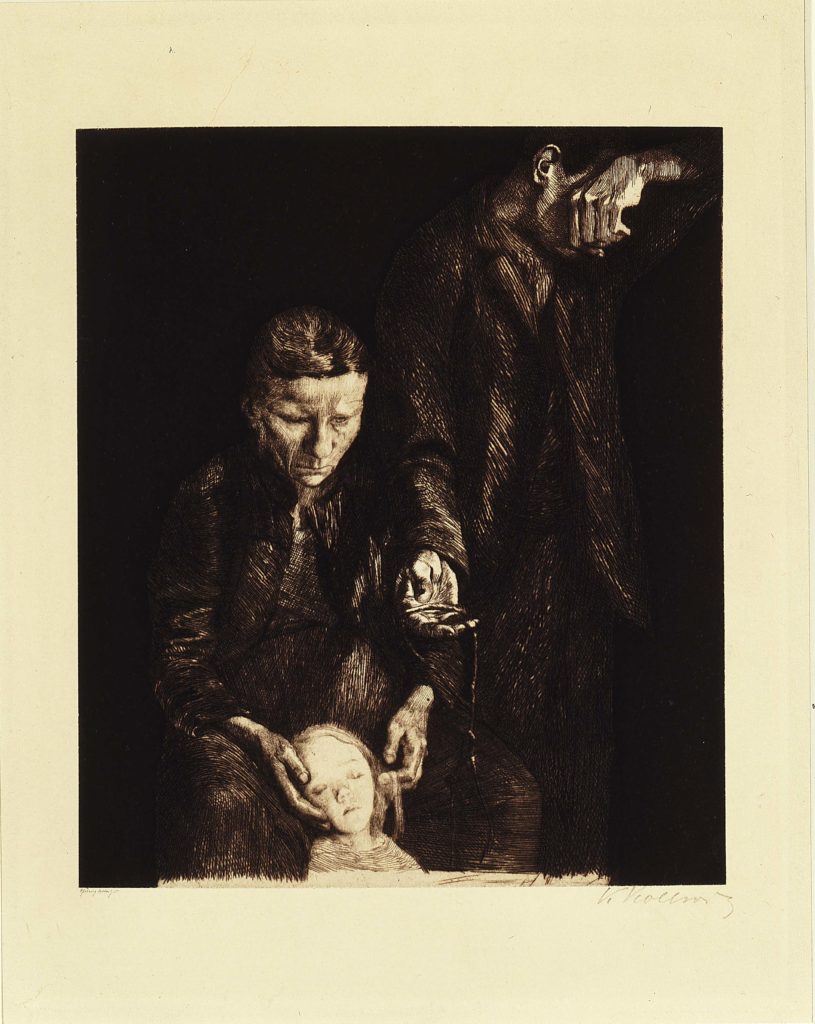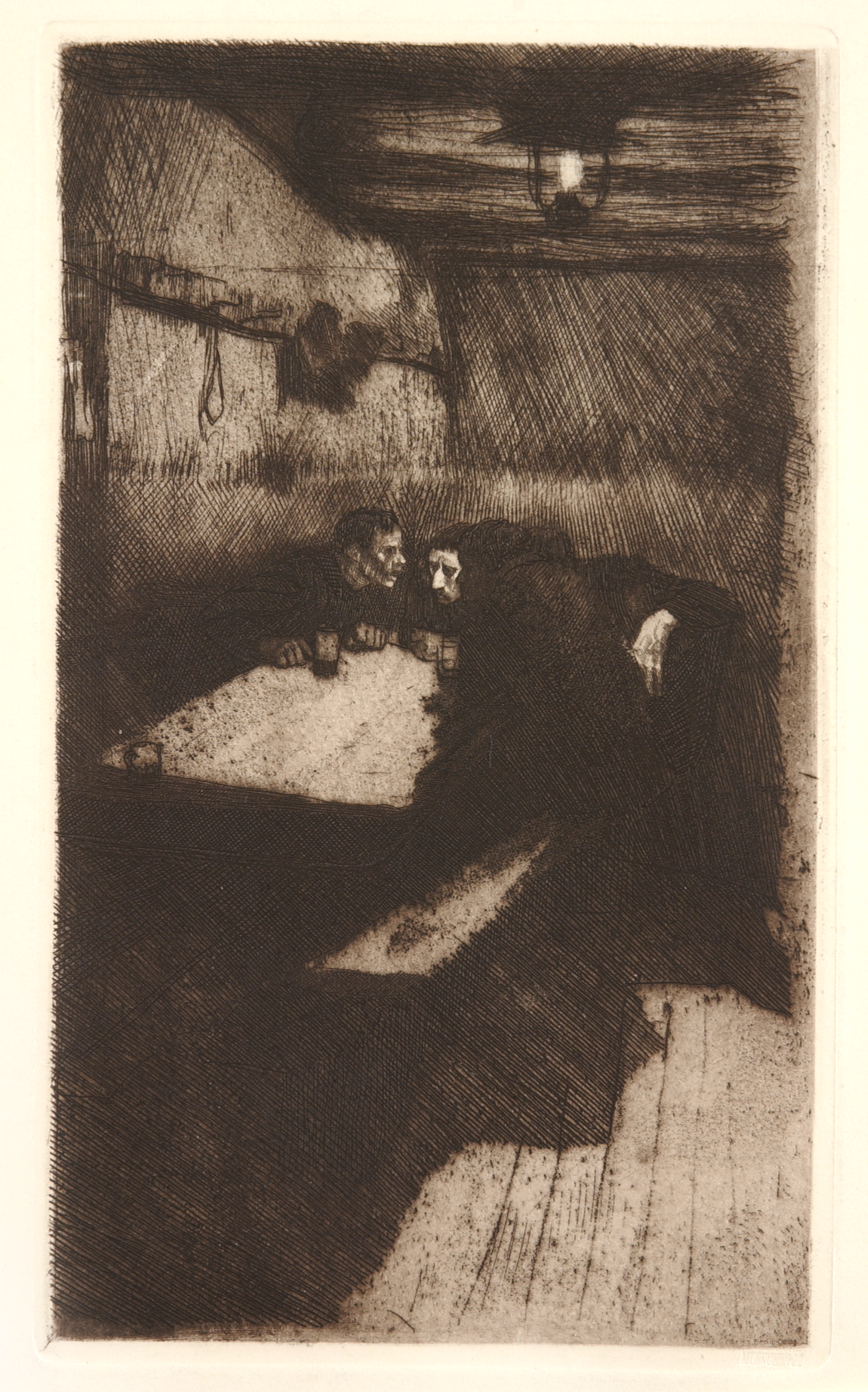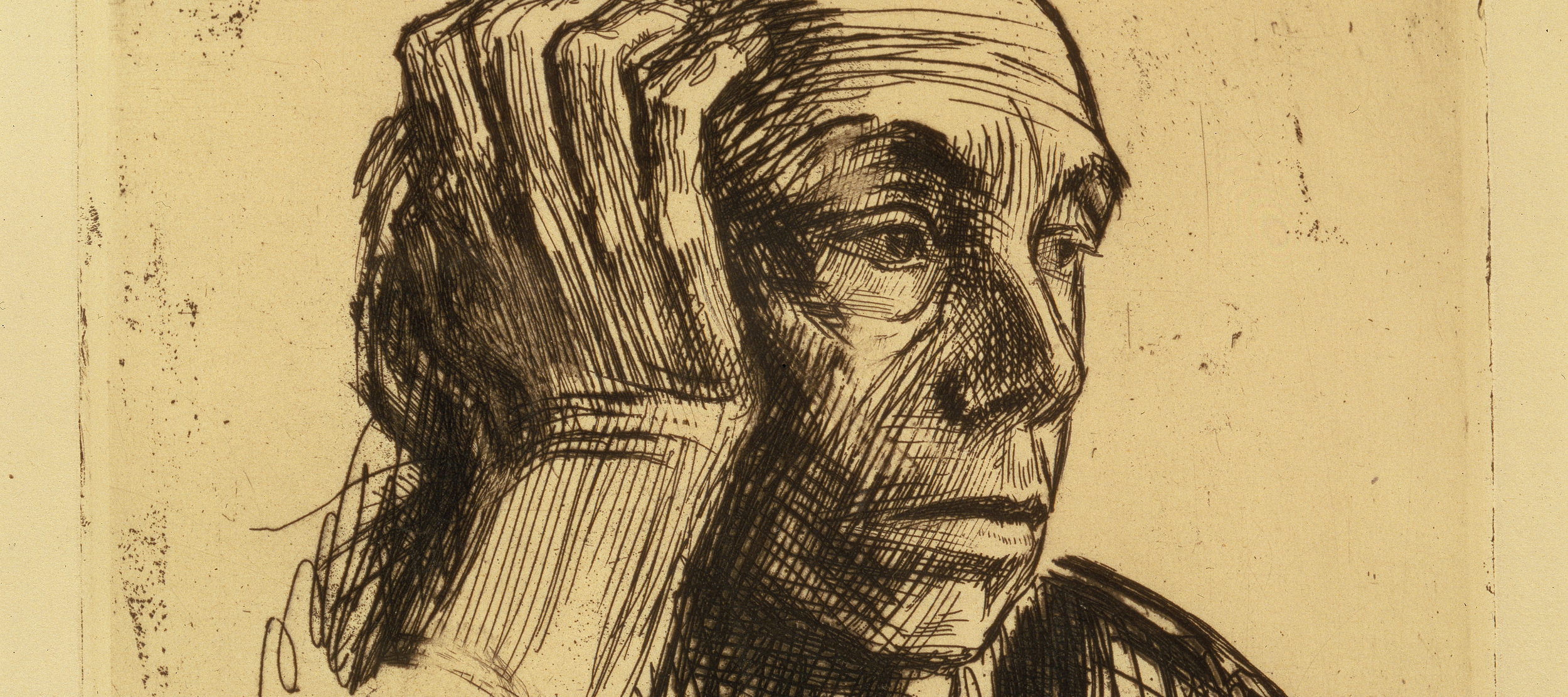Impress your friends with five fast facts about Käthe Kollwitz (1867–1945). NMWA’s collection holds 16 of Kollwitz’s works, including three sculptures and 13 prints.

1. A Woman for the People
Kollwitz advocated for social change and causes such as abortion rights and workers’ rights. Her socialist, open-minded family and upbringing in the liberal town of Königsberg, Germany (now Kaliningrad, Russia), fostered her voice.
2. Artistic Beginnings
Kollwitz began her formal artistic training at age 14. Between World War I and World War II, she became proficient in etching, lithographs, and woodcuts. During this period, Kollwitz’s preferred medium of printmaking mimicked the reproducibility and accessibility of war propaganda.
3. Revolting
Kollwitz exhibited “A Weaver’s Revolt” (1893–1897) at the 1898 Great Berlin Art Exhibition. This six-print series, of which NMWA holds Conspiracy and The End, depicts a fictitious worker’s revolt in a contemporary setting, highlighting Kollwitz’s concern for the working class. Emperor Kaiser Wilhelm II refused to award Kollwitz a gold medal at the exhibition on the grounds of her gender—and because he believed the series was subversive.

4. Dual Purpose
In 1914, Kollwitz’s son Peter died while fighting in World War I. As a result, art became both an emotional outlet for the artist as well as a form of propaganda that communicated an urgency to protect the youth of Germany.
5. Her Legacy
Though much of her work was destroyed in a 1943 Berlin air raid, and she died two years later, Kollwitz’s voice still resonates. Extant works, such as The Downtrodden (1900), part of NMWA’s collection, powerfully depict universal human emotions like anguish, despair, and determination. Two museums dedicated to Kollwitz, in Berlin and in Cologne, keep her legacy alive.

